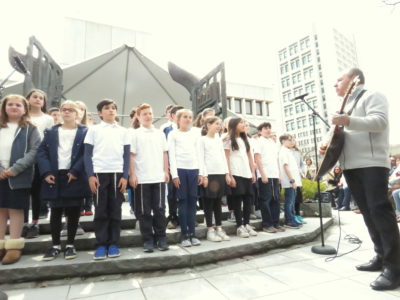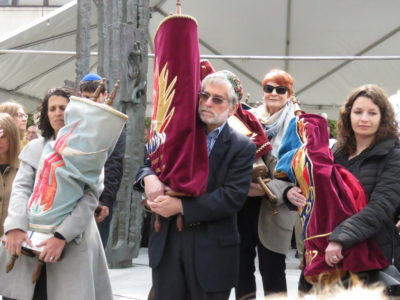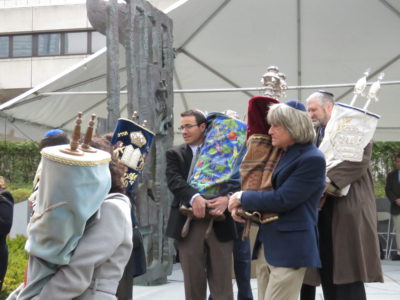Story and Photos By Grace Bennett
April 12, White Plains, NY–A procession of 30 ‘Holocaust Rescued Torahs’ took place at the Yom Hashoah Ceremony in the Anne Frank Garden of Remembrance– each symbolic of the devastation that fell Jewish communities throughout Nazi-occupied Europe, each also a reminder of Jewish resilience and survival against all odds.
Representatives from Temples, Synagogues and Jewish Centers from throughout Westchester County carefully cradled and carried the preserved Torahs to the foot of the open gates. From New Castle’s Temple Beth El of Northern Westchester, a Torah, held by Rabbi Jonathan Jaffe, came from Boskovice, at the time a part of Germany, now in the Czec Republic. From Congregation B’nai Yisrael in Armonk was a Torah scroll saved by congregants of a Synagogue in Pacov (50 miles SE of Prague).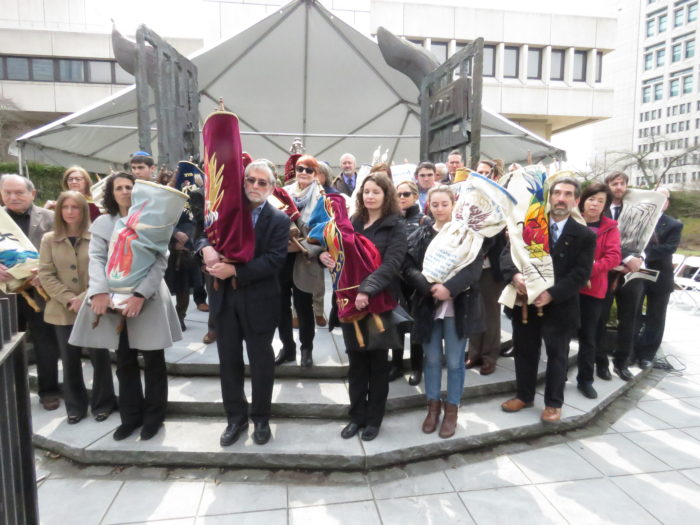
Songs by the Westchester Day School choir followed as did the blowing of the Shofar and an invocation by Rabbi Daniel Gropper of the Westchester Board of Rabbis; Gropper notably called out current day bigotry. He also quoted the Garden of Remembrance’s inscription: “In memory of those who died. In thanksgiving for those who survived. In gratitude for those who risked their lives in rescue.”
Remarks by Joseph Kaidanow, Chairman of the Holocaust and Human Rights Education Center, and from Lisa Roberts. President of the Westchester Jewish Council, preceded those of County Executive George Latimer.
Kaidanow, recalled the legacy of the much beloved Eugene Grant, a survivor and long-time, generous benefactor of the HHREC who recently passed. Eugene often warned, he said, of what can happen “when people fail to be upstanders.”
Latimer reminded attendees of the “common humanity and vigilance” we must share after “six million Jews were mercilessly killed.”
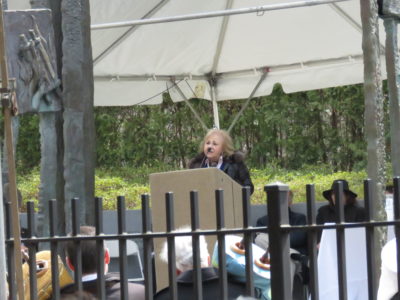
The final remarks before a candle lighting were from survivor Agnes Vertes who relayed the harrowing details of her experiences being separated from her parents, describing too how vital it was to her that she was still together with her little sister.
Both were hidden as very young children from the Nazis in Hungary. One tale in particular resonated when Vertes told of how her two-year-old sister tugged playfully on the trouser of a Hungarian Nazi officer who had come to find Jews in the orphanage she and her sister were living in as ‘Catholics.’ (Agnes was warned never to mention they were Jewish–she came to understand why after witnessing Jewish people being beaten.)
The SS officer was charmed by her sister, tossed her in the air, and said that only an Aryan child could be so cute. He abandoned his mission.
“She was 100 percent Jewish!” Gertes said, proudly, eliciting some laughter too. Her little sister, she said, “may have saved 100 lives that day.”
Gertes described how she struggled with survivor’s guilt after learning so many children were killed, but gradually felt she “was lucky to have survived” so that she could tell the story so that such events would n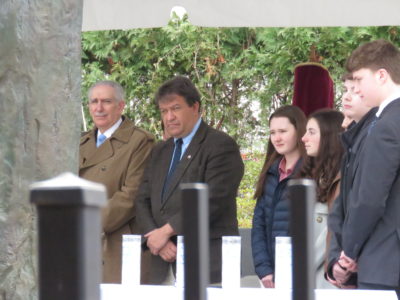 ever be repeated again.
ever be repeated again.
